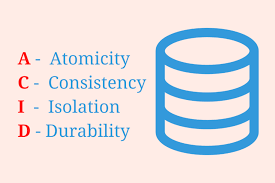SQL : ACID Properties in RDBMS - Ensuring Database Reliability

In the world of relational databases, the ACID properties form the bedrock of transactional systems, ensuring data integrity and consistency.
In this comprehensive blog post, we will unravel the meaning of ACID and explore each property in-depth, complemented by real-world analogies and snippets in MS SQL.
ACID: A Pillar of Database Reliability
ACID stands for Atomicity, Consistency, Isolation, and Durability. These properties collectively define the characteristics of a reliable database system, especially in the context of transactions.
Atomicity: The All-or-Nothing Principle
Visualizing Atomicity
Imagine a financial transaction where money is transferred from one account to another. The atomicity property ensures that the entire transaction occurs as a single, indivisible unit. If any part of the transaction fails (e.g., due to an error), the entire operation is rolled back to its initial state, ensuring the system remains consistent.
MS SQL Example
BEGIN TRANSACTION;
-- SQL statements for the transaction
IF (/* Transaction succeeds */)
COMMIT;
ELSE
ROLLBACK;
Consistency: Maintaining Database Rules
Upholding Consistency
Consistency ensures that a transaction brings the database from one valid state to another, adhering to predefined rules. In a hotel reservation system, if a customer books a room, the system ensures that the room is available, the customer is eligible, and the reservation adheres to business rules.
MS SQL Example
-- Enforcing consistency through constraints
CREATE TABLE Orders (
OrderID INT PRIMARY KEY,
ProductID INT,
Quantity INT,
CHECK (Quantity > 0) -- Ensures quantity is always positive
);
Isolation: Separating Concurrent Transactions
Embracing Isolation
Isolation ensures that concurrent transactions do not interfere with each other. In a scenario where multiple users are updating their profiles simultaneously, the isolation property prevents one user's changes from affecting another user's updates until the transactions are completed.
MS SQL Example
-- Setting isolation level
SET TRANSACTION ISOLATION LEVEL READ COMMITTED;
-- SQL statements for the transaction
Durability: Preserving Changes
Ensuring Durability
Durability guarantees that once a transaction is committed, its changes are permanent and survive system failures. In a banking system, if a fund transfer is successful, the durability property ensures that the transfer is reflected even after a system restart.
MS SQL Example
-- Ensuring durability through transaction log
BACKUP LOG YourDatabase WITH NORECOVERY;
Conclusion
In the symphony of database management, ACID properties serve as the orchestrators, ensuring the reliability and integrity of transactional systems. Understanding and implementing these properties are paramount for designing robust database architectures, especially in scenarios where data accuracy and consistency are non-negotiable.
Whether safeguarding financial transactions or upholding business rules in a reservation system, ACID properties provide the assurance that database operations occur reliably, even in the face of system complexities and failures. As you embark on your journey in database design, let the principles of ACID guide you in crafting resilient and trustworthy systems.
Happy Querying!

